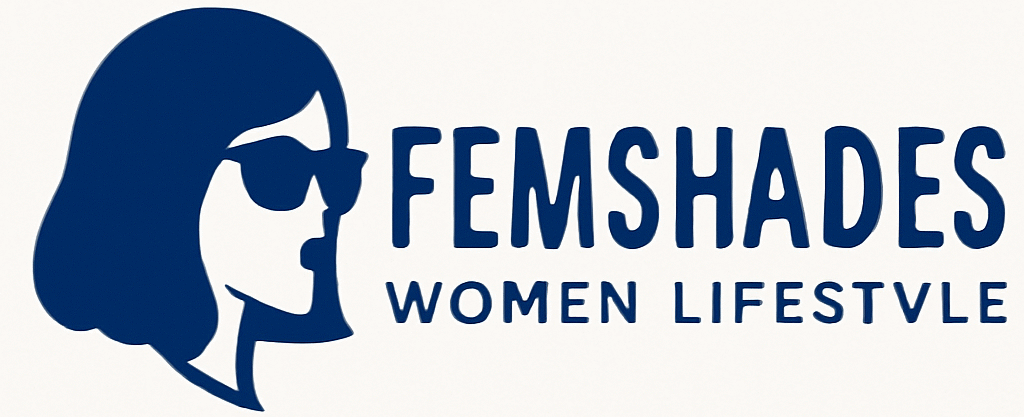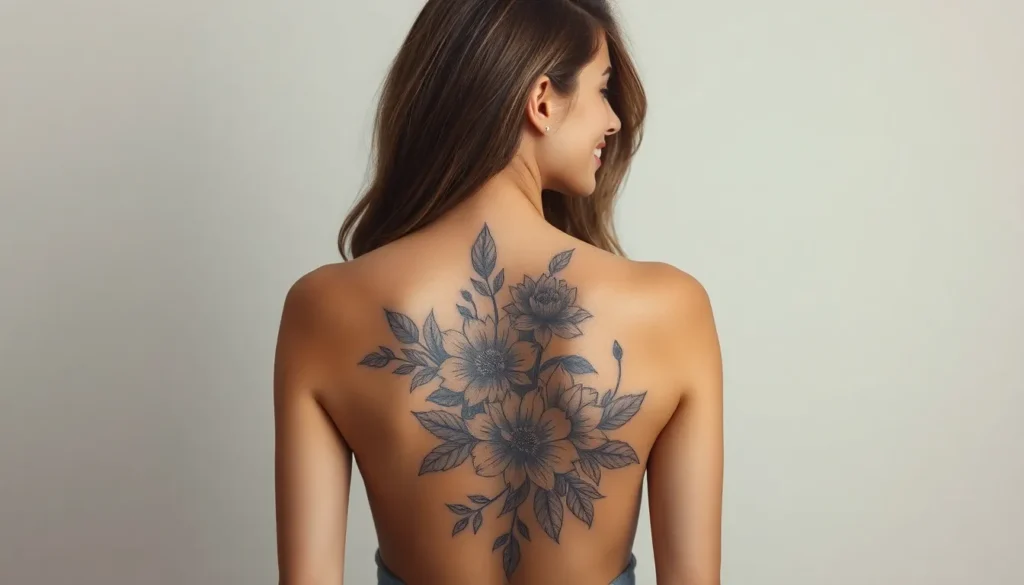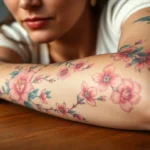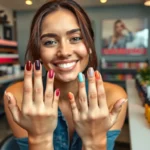We’ve all been there – staring at that back tattoo that once felt perfect but now needs a fresh start. Whether it’s an ex’s name that brings back memories you’d rather forget or artwork that no longer reflects who you’ve become, back tattoo cover-ups offer the perfect solution to transform your ink into something you’ll love again.
The back provides an incredible canvas for cover-up artistry, offering ample space for creative designs that can completely mask your original tattoo. From flowing florals and intricate mandalas to bold geometric patterns and stunning nature scenes, the possibilities are virtually endless when you’re working with this large area.
We’ll explore the most stunning back tattoo cover-up ideas specifically designed for women, sharing expert tips on design selection, color choices, and working with skilled artists who specialize in transformational ink. Get ready to discover how your old tattoo can become the foundation for something even more beautiful.
Small Back Tattoo Cover Up Ideas That Make a Big Impact
Small back tattoos don’t need massive designs to achieve stunning transformation results. Strategic placement and thoughtful design choices can completely reinvent your existing ink while maintaining elegance and sophistication.
Delicate Floral Designs Over Old Text
Floral motifs excel at concealing unwanted text tattoos through their organic flowing lines and natural layering opportunities. We recommend cherry blossoms, peonies, or delicate roses to softly mask old lettering while creating beautiful feminine artwork. Watercolor techniques add depth and movement that naturally draws attention away from underlying text elements.
Botanical elements like eucalyptus branches or wildflower clusters work exceptionally well for script cover ups. Artists can weave stems and petals around existing letters to create seamless integration between old and new elements. Soft shading in pastels or muted earth tones helps blend harsh black text into the overall floral composition.
Geometric Patterns for Clean Line Coverage
Geometric designs offer precise control when covering small tattoos with defined edges and straight lines. We’ve seen mandala patterns successfully transform basic symbols into intricate sacred geometry artwork. Triangular compositions, hexagonal clusters, and diamond lattice work create optical illusions that completely disguise original tattoo boundaries.
Sacred geometry elements like flower of life patterns or Celtic knots provide structured coverage while maintaining spiritual significance. These mathematical designs use repetitive shapes and consistent line weights to overwhelm the eye’s ability to distinguish old tattoo elements. Dotwork techniques enhance geometric patterns by adding texture and visual interest to flat geometric surfaces.
Minimalist Nature Elements
Nature inspired minimalist designs prove that simplicity creates powerful visual impact for small cover up projects. We often suggest single feathers, tiny birds in flight, or delicate tree silhouettes to transform outdated tattoos into modern artistic statements. Mountain ranges, wave patterns, or constellation designs work beautifully across the shoulder blade area.
Simple botanical outlines like fern fronds or single branch designs offer elegant answers without overwhelming the existing tattoo space. These minimalist approaches focus on clean lines and negative space to redirect attention while maintaining the intimate scale of small back tattoos. Subtle placement adjustments can incorporate existing tattoo elements as natural shadows or background textures.
Large Back Tattoo Cover Up Transformations
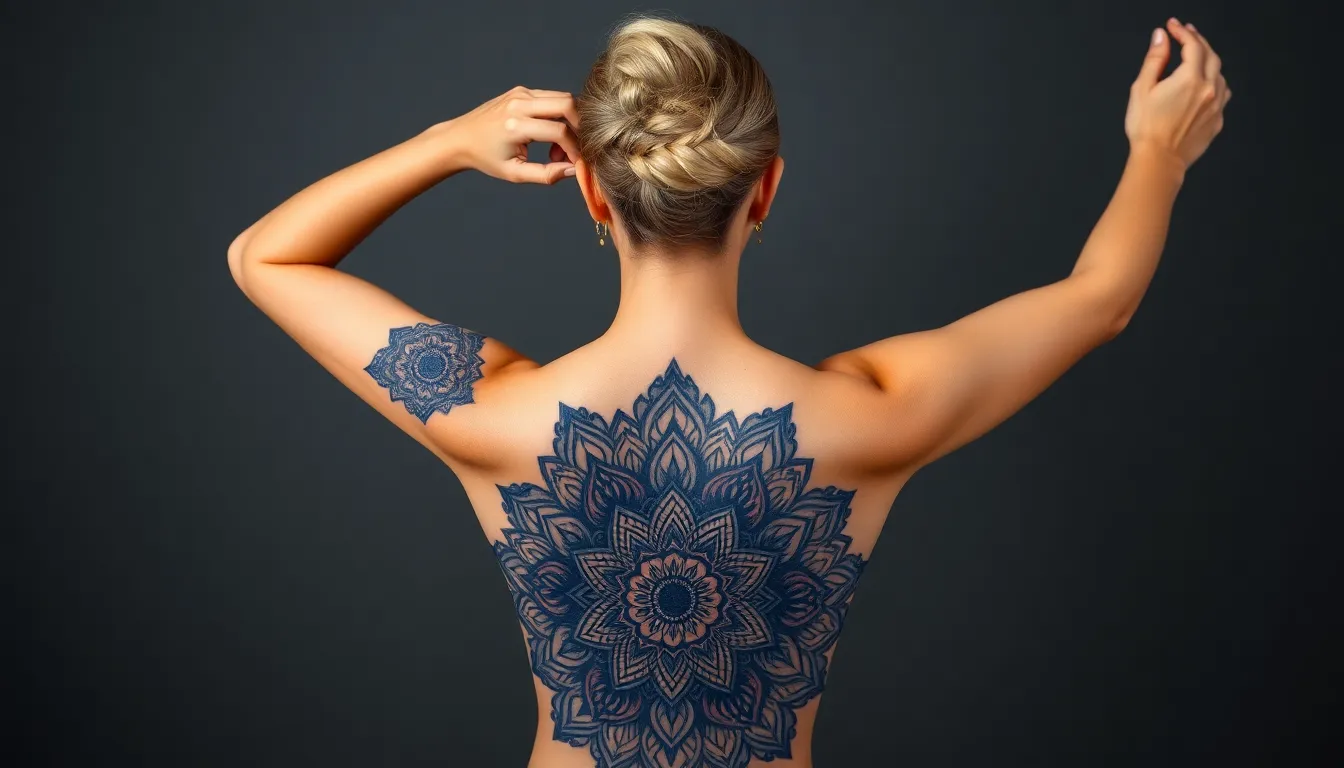
We’ll now explore comprehensive cover-up options that transform substantial back tattoos into stunning masterpieces.
Full Back Mandala Designs
Full back mandala designs offer the most versatile coverage for large unwanted tattoos. These intricate circular patterns feature symmetrical elements that naturally disguise dark lines and problematic areas underneath. We recommend choosing mandalas with dense geometric patterns because they provide maximum coverage while maintaining artistic beauty.
Positioning these designs strategically across your entire back creates seamless coverage. The repetitive nature of mandala elements means tattoo artists can adjust patterns to work around existing ink without compromising the overall design. Placement typically starts from the center spine and radiates outward, ensuring balanced coverage across both shoulder blades and lower back areas.
Color selection plays a crucial role in effective mandala cover-ups. Dark purples and deep blues work exceptionally well for covering black ink, while rich burgundy and forest green tones can transform colored tattoos underneath. Artists often incorporate multiple shades within the same mandala to address different areas of the original tattoo.
Watercolor Industry Scenes
Watercolor industry scenes excel at covering irregularly shaped or faded back tattoos. These artistic designs use soft, blended colors that naturally camouflage harsh lines and unwanted elements from previous work. Mountain ranges, forest silhouettes, and ocean horizons provide expansive coverage options that work beautifully across the back’s natural contours.
Blending techniques in watercolor tattoos create seamless transitions over existing ink. Artists apply layers of translucent colors that gradually build coverage while maintaining the flowing, organic appearance characteristic of watercolor art. This approach particularly suits covering tribal designs or bold geometric patterns that need softening.
Incorporating multiple industry elements maximizes coverage potential. Combining sky gradients with forest treelines or adding flowing rivers through mountain scenes creates comprehensive designs that address various sections of unwanted tattoos. These elements can be adjusted in size and placement to work around areas that require different levels of coverage.
Ornate Victorian-Style Artwork
Ornate Victorian-style artwork provides elegant answers for covering sophisticated back tattoos. These elaborate designs feature intricate floral patterns, detailed birds, and decorative borders that effectively conceal underlying ink while creating timeless feminine appeal. The complexity of Victorian motifs naturally accommodates irregularities in existing tattoos.
Layered design elements in Victorian tattoos create depth that hides problematic areas. Overlapping roses, cascading vines, and ornamental frames allow artists to strategically place darker elements over the heaviest parts of original tattoos. This layering technique ensures complete coverage while maintaining the authentic Victorian aesthetic.
Customization options in Victorian designs accommodate personal preferences and coverage needs. Artists can incorporate exact flowers, birds, or decorative elements that hold personal meaning while ensuring they serve the practical purpose of covering unwanted ink. These personalized touches transform functional cover-ups into meaningful artistic expressions that reflect individual style.
Creative Ways to Incorporate Your Existing Tattoo
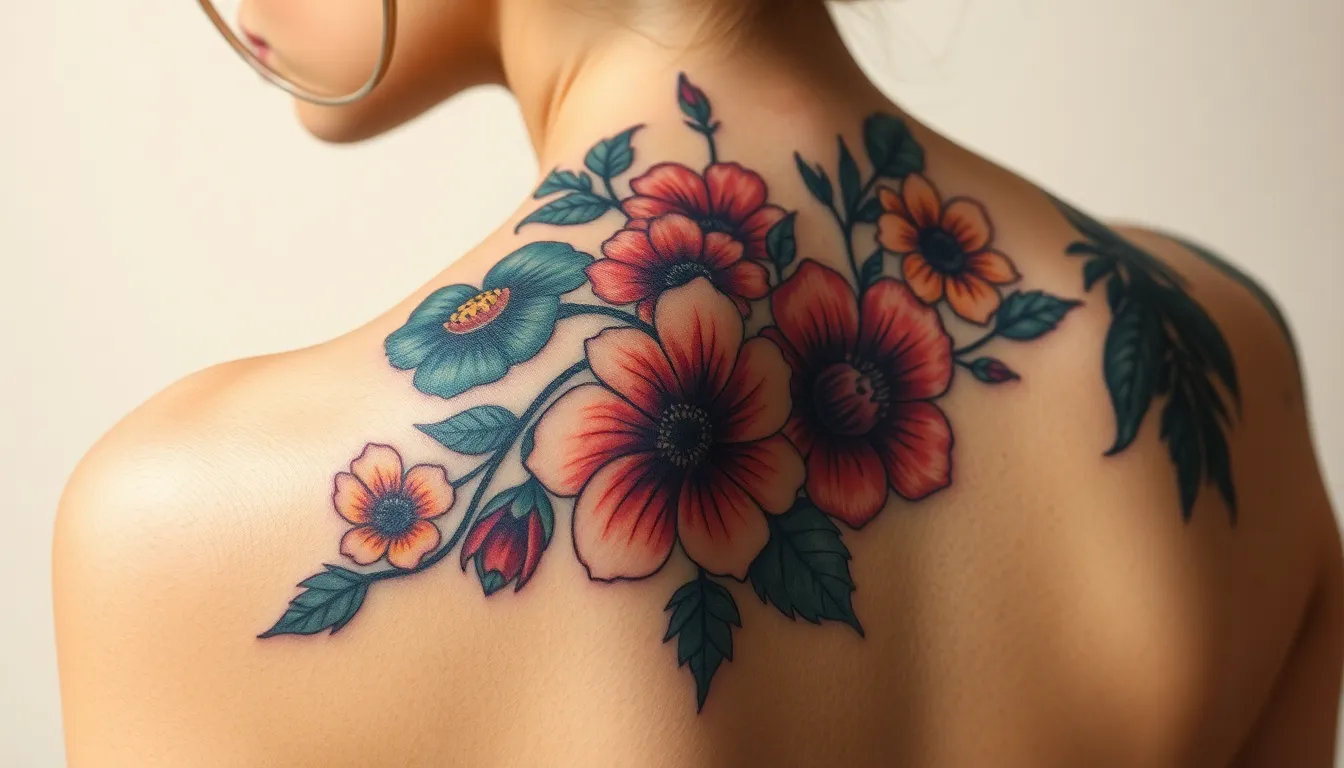
Sometimes the best back tattoo cover ups don’t completely hide your original ink. We can transform existing tattoos into stunning new masterpieces by working with what’s already there.
Turning Old Designs Into Shadow Elements
Shadow integration transforms your original tattoo into a foundational element of your new design. We create depth and dimension by using the existing ink as natural shadows within larger compositions. Your old floral tattoo becomes the shadow beneath a bright new botanical garden scene. Artists strategically position new elements to make original tattoos appear as intentional shadowing effects.
Silhouette techniques work particularly well for covering unwanted text or simple line work. We turn basic designs into mysterious shadow shapes that enhance rather than detract from new artwork. The original ink provides natural contrast that would otherwise require additional shading work.
Blending Original Ink Into New Compositions
Ink overlap techniques use darker pigments to seamlessly merge old tattoos into fresh designs. We cover lighter areas of existing tattoos with deeper colors that create smooth transitions between old and new elements. This method proves especially effective for covering faded or unwanted tattoos that have lost their original vibrancy.
Compositional blending incorporates your existing tattoo as an integral part of a larger artistic vision. We might transform a small butterfly into part of an elaborate garden scene or turn geometric shapes into architectural elements within a cityscape design. The key lies in viewing your current tattoo as raw material rather than something to hide completely.
Using Negative Space Techniques
Negative space design creates visually striking pieces by making your original tattoo part of the empty spaces within new artwork. We design around existing ink to form patterns where the old tattoo becomes intentional negative space. This technique works exceptionally well with geometric patterns and mandala designs.
Strategic placement of new elements frames your existing tattoo within carefully planned empty areas. We position bold new designs to create windows or frames around original artwork, transforming something unwanted into an intentional design feature. The contrast between filled and unfilled spaces adds visual interest while preserving elements of your tattoo history.
Popular Cover Up Styles for Women’s Back Tattoos
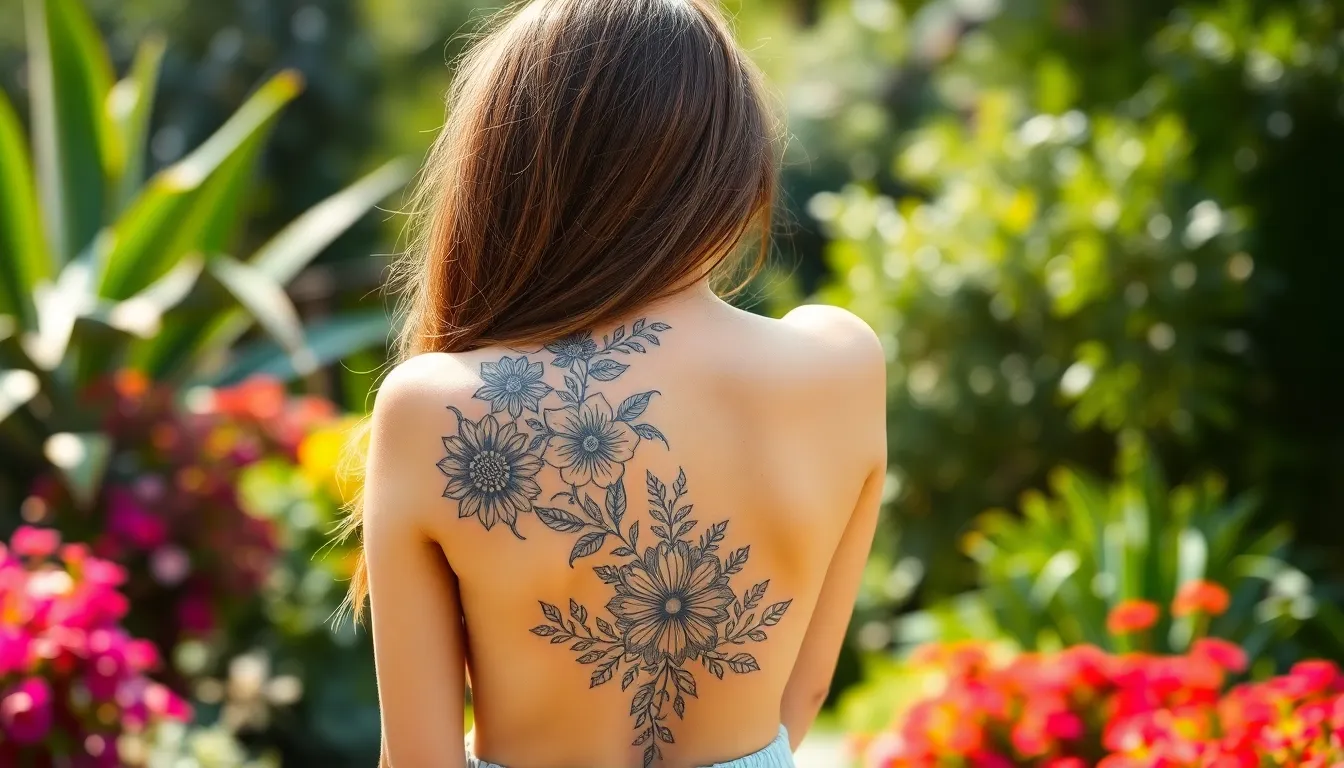
We’ve found that certain design styles consistently deliver stunning results for back tattoo cover ups. These approaches offer both aesthetic appeal and practical coverage answers.
Feminine Botanical Gardens
Flowers and leaves create some of the most beautiful cover up transformations we see in our studios. Roses and lotus flowers work exceptionally well for covering unwanted tattoos because their natural layering allows artists to strategically place petals over problematic areas. These floral patterns can seamlessly integrate with existing tattoos, creating a cohesive and natural look that feels intentional rather than corrective.
Vines and branches excel at covering larger tattoos, particularly those with dark colors that need substantial coverage. Long, flowing vine designs wrap naturally around the contours of your back, making them perfect for covering linear tattoos like text or tribal designs. This botanical approach adds an organic, garden like feel to your back while effectively concealing the original ink.
Abstract Artistic Expressions
Geometric patterns offer versatile answers for women seeking structured cover up designs. Mandalas work particularly well because their circular nature can expand to cover various tattoo sizes and shapes. Chevron patterns provide clean lines that can redirect attention from unwanted elements while creating visually striking results.
Free form designs give you complete creative freedom to address exact coverage needs. Abstract art allows artists to work around the unique challenges of your original tattoo, incorporating unexpected shapes and flowing elements that transform problematic areas into artistic focal points.
Cultural and Spiritual Symbols
Butterflies and birds represent transformation and freedom, making them meaningful choices for cover up work. A butterfly spreading its wings across your lower back creates a powerful symbol of personal growth while providing excellent coverage for horizontal tattoos or text.
Celtic knots add cultural depth and significance to your cover up while effectively concealing original designs. These intricate patterns work especially well for covering geometric or tribal tattoos because their complex interwoven structure can absorb and redirect visual attention.
Swords and vintage clocks bring mystery and elegance to back cover ups, particularly for women covering text or memorial tattoos. These elements create sophisticated focal points that transform unwanted ink into meaningful artistic statements.
Strategic Placement Options for Back Cover Ups
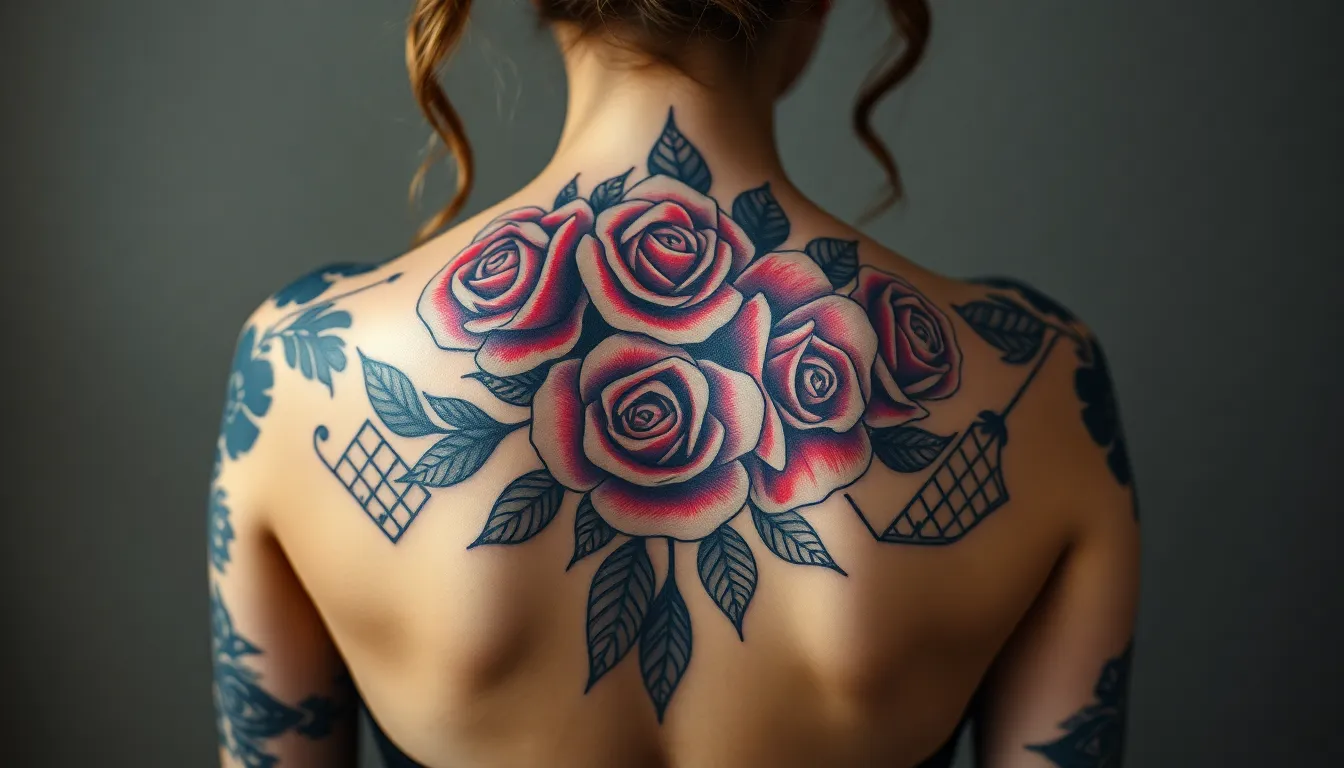
Back cover ups require strategic positioning to maximize both aesthetic appeal and concealment effectiveness. The back’s expansive canvas enables intricate patterns, detailed shading, and color blending that create stunning transformations.
Upper Back and Shoulder Blade Designs
Upper back placements offer the widest range of cover up possibilities for women seeking elegant transformations. Floral arrangements like blooming roses and flowing vines excel at concealing dark or uneven inks through their versatile, layered structures. Mandalas create effective coverage using detailed geometric patterns that naturally blend with existing tattoo edges.
Japanese inspired motifs including cherry blossoms and koi fish provide sophisticated options that mask previous artwork through their intricate designs. Shoulder blade placements work particularly well for symmetrical designs that create balanced visual appeal across both sides. Artists often incorporate negative space and strategic shading to blur old tattoos seamlessly into new artwork.
Lower Back Transformation Ideas
Lower back cover ups thrive with bold, flowing designs that complement the body’s natural curves. Large butterflies rank among the most popular choices for women, offering feminine appeal while effectively hiding previous lower back tattoos. Floral wreaths create stunning transformations by wrapping around the lower back area with organic, curved elements.
Abstract patterns work exceptionally well in this placement zone because they follow the body’s contours naturally. Colorful elements and soft shading techniques help blend old ink into smooth transitions. Artists frequently recommend designs that extend slightly upward from the lower back to ensure complete coverage of existing tattoos.
Full Spine Coverage Answers
Full spine placements provide the largest canvas for extensive cover up projects, making them ideal for complex or dark original tattoos. Continuous line designs like vines, phoenixes, or abstract art follow the spine’s natural contour while completely masking previous work. Artists use blackwork, realism, and illustrative styles to layer new elements over old ink effectively.
Sacred geometry, flowing feathers, and decorative ribbons enhance spine designs while ensuring complete coverage from neck to lower back. These unified pieces create visually striking results that transform the entire back area. Full spine coverage works particularly well when original tattoos are large, dark, or positioned in multiple back locations that require cohesive design answers.
Color Choices That Work Best for Back Cover Ups
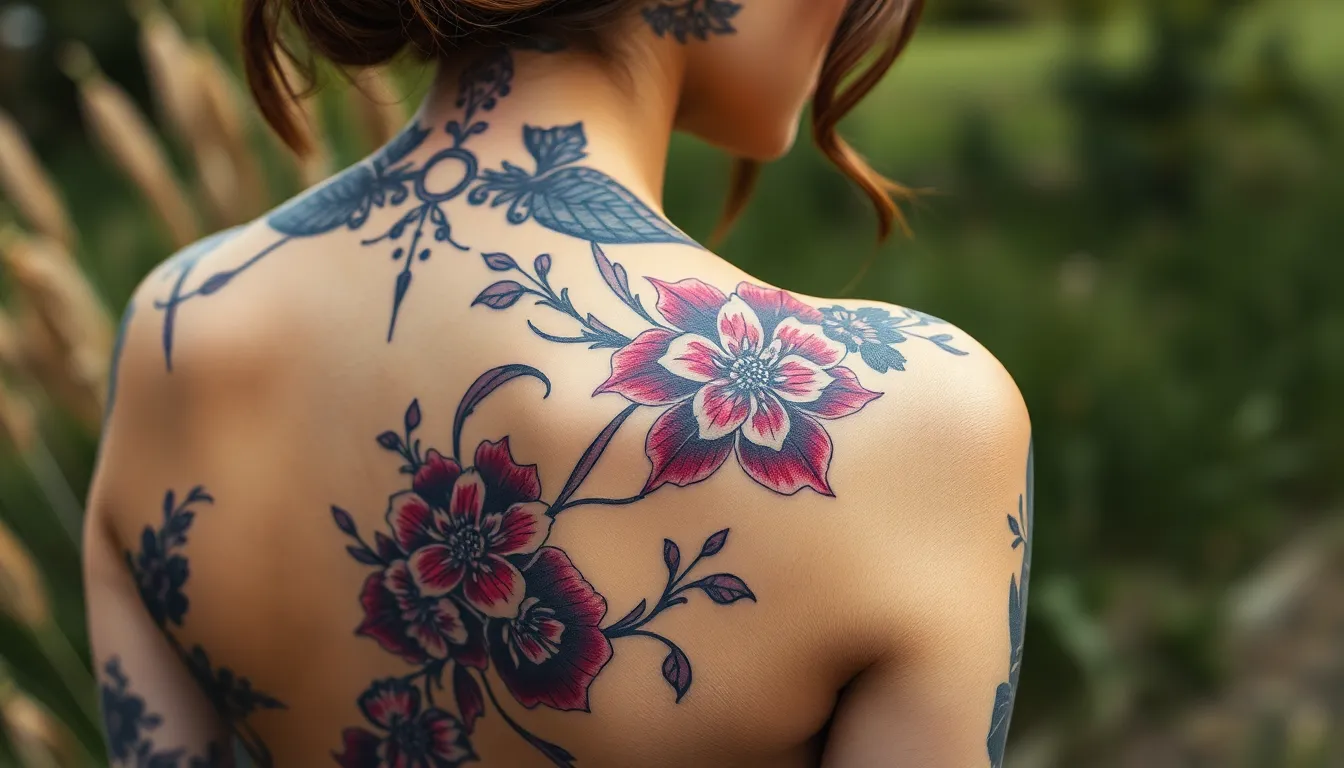
Selecting the right colors is crucial for successful back tattoo cover-ups. Our strategic approach to color selection ensures your new design effectively conceals old ink while creating stunning visual impact.
Dark Ink Strategies for Heavy Coverage
Black and charcoal tones provide the most reliable coverage for existing back tattoos. These deep shades completely conceal old ink underneath, making them essential for heavily saturated original tattoos. We recommend using bold geometric patterns, intricate mandalas, or detailed floral designs that incorporate substantial black work for maximum concealment.
Navy blue offers excellent coverage while adding subtle color variation. This versatile shade works particularly well for nature-inspired designs like leaves, branches, or ocean themes. Navy creates depth without the stark contrast of pure black, allowing for more artistic flexibility in your cover-up design.
Deep purple and burgundy tones deliver sophisticated coverage options. These rich colors excel at concealing faded or lighter original tattoos while maintaining an elegant appearance. Floral arrangements featuring dark roses or vintage botanical illustrations showcase these colors beautifully on back placements.
Bright Colors That Pop Over Old Tattoos
Vibrant oranges and yellows create stunning focal points that distract from underlying ink. These warm tones work exceptionally well when incorporated into butterfly wings, sunset scenes, or tropical flower petals. Bright accent colors draw the eye away from shadowy remnants of original tattoos.
Electric blues and greens add ever-changing energy to cover-up designs. We’ve seen remarkable success using these colors in watercolor techniques, where the bright hues blend seamlessly over existing ink. Peacock feathers, ocean waves, and botanical gardens showcase these vibrant shades effectively.
Hot pink and coral tones offer feminine appeal while providing excellent coverage. These colors work particularly well in floral designs, abstract art, or mandala elements. Strategic placement of bright accents creates visual interest that overshadows unwanted original tattoos.
Monochromatic Designs for Subtle Elegance
Single-color palettes using various shades create sophisticated cover-up answers. Gray scale designs offer timeless elegance while effectively concealing existing tattoos through layered tonal variations. Realistic portraits, architectural elements, or detailed line work showcase monochromatic approaches beautifully.
Sepia and brown tone designs provide warm, vintage aesthetics for back cover-ups. These earthy palettes work exceptionally well for nature scenes, vintage maps, or classical artwork reproductions. Multiple brown shades create depth and dimension while seamlessly blending over original ink.
Blue monochromatic schemes deliver calming, cohesive coverage results. Various blue tones from navy to powder blue create stunning ocean themes, sky scenes, or abstract compositions. This approach maintains visual unity while effectively disguising unwanted tattoos through strategic shade variation.
Finding the Right Artist for Your Back Cover Up
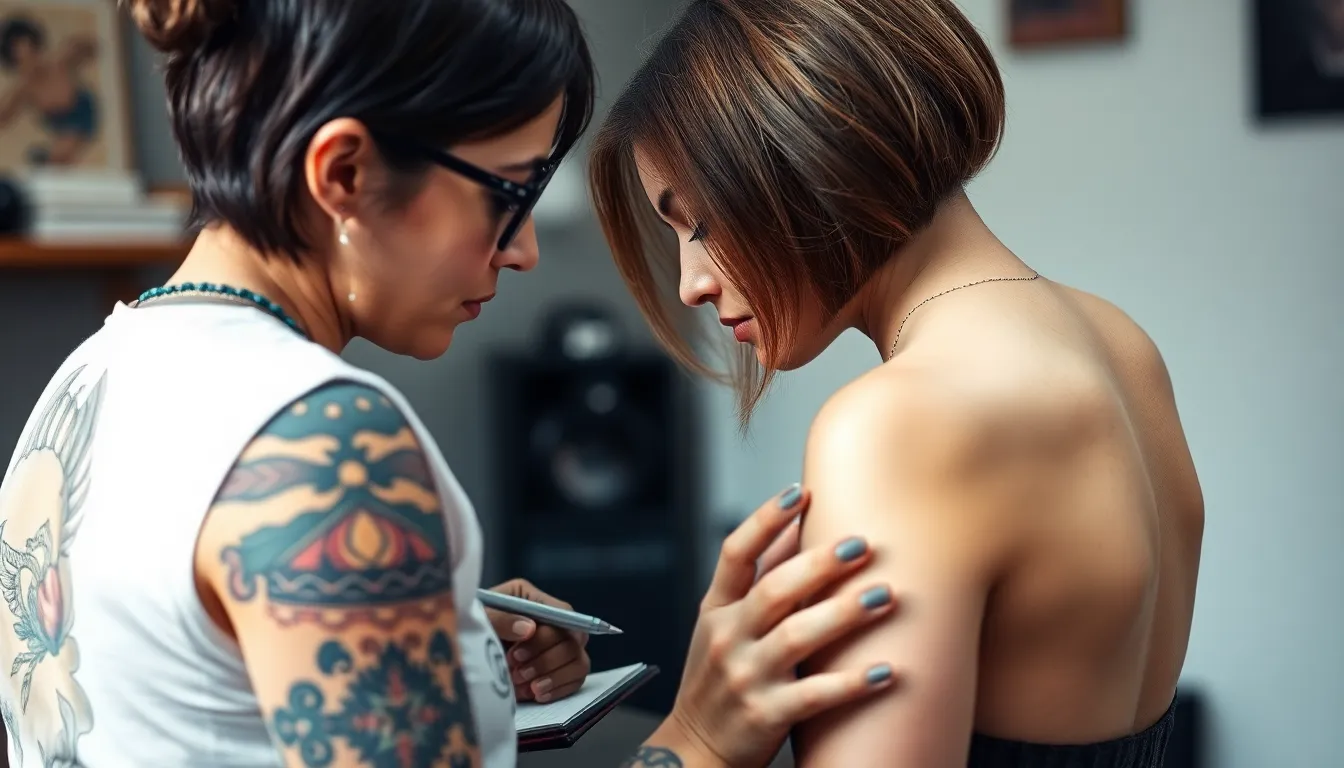
Choosing the right tattoo artist can make or break your back cover up transformation. We need to prioritize finding specialists who understand the unique challenges of covering existing ink while creating beautiful new artwork.
Researching Cover Up Specialists
Portfolio evaluation serves as your first line of defense when selecting a cover up artist. We recommend examining at least 20-30 examples of their previous back cover up work to assess their skill level and artistic range. Look for artists who showcase before and after photos that demonstrate their ability to transform unwanted tattoos into stunning new designs.
Specialization matters more than general tattooing experience when it comes to cover ups. Artists who dedicate 50% or more of their practice to cover up work typically possess advanced knowledge of color theory and layering techniques. Check their social media profiles and websites for exact cover up galleries rather than mixed portfolios.
Client testimonials provide valuable insights into the artist’s communication style and project management skills. We suggest reading reviews from at least 10 previous cover up clients to understand their satisfaction levels and any potential concerns about the process.
Portfolio Review and Consultation Tips
Schedule comprehensive consultations with your top 3 artist candidates before making any commitments. During these meetings, bring clear photos of your existing tattoo from multiple angles and lighting conditions. Professional consultations typically last 30-45 minutes and should include detailed discussions about design possibilities, timeline expectations, and cost estimates.
Examine technique diversity within their cover up portfolio to ensure they can handle your exact tattoo challenges. Artists should demonstrate proficiency with various approaches including shadow integration, color neutralization, and negative space design techniques we discussed earlier.
Request design sketches during the consultation process to visualize their creative approach to your cover up. Quality artists often provide preliminary sketches or digital mockups that help you understand how they plan to transform your existing tattoo into new artwork.
Questions to Ask Before Committing
Experience verification starts with asking about their exact background in back cover ups. Essential questions include: “How many back cover ups have you completed in the past year?” and “What percentage of your work focuses on cover up tattoos?” Artists should provide exact numbers rather than vague responses.
Technical approach discussions help you understand their methodology and expertise level. Ask: “How do you approach different skin tones and tattoo complexities?” and “What techniques do you use to neutralize dark or heavily saturated original tattoos?” Their answers should demonstrate knowledge of color theory and ink layering principles.
Portfolio evidence questions ensure they can handle projects similar to yours. Request: “Can you show me examples of back cover ups you’ve done on similar skin tones?” and “Do you have before and after photos of cover ups involving tattoos similar to mine?” Artists with relevant experience should readily provide multiple examples.
Timeline and aftercare inquiries help set realistic expectations for your project. Ask about session requirements, healing time between appointments, and their exact aftercare recommendations for back cover ups. Professional artists typically schedule back cover ups across 2-4 sessions depending on size and complexity.
Aftercare Tips for Large Back Tattoo Cover Ups
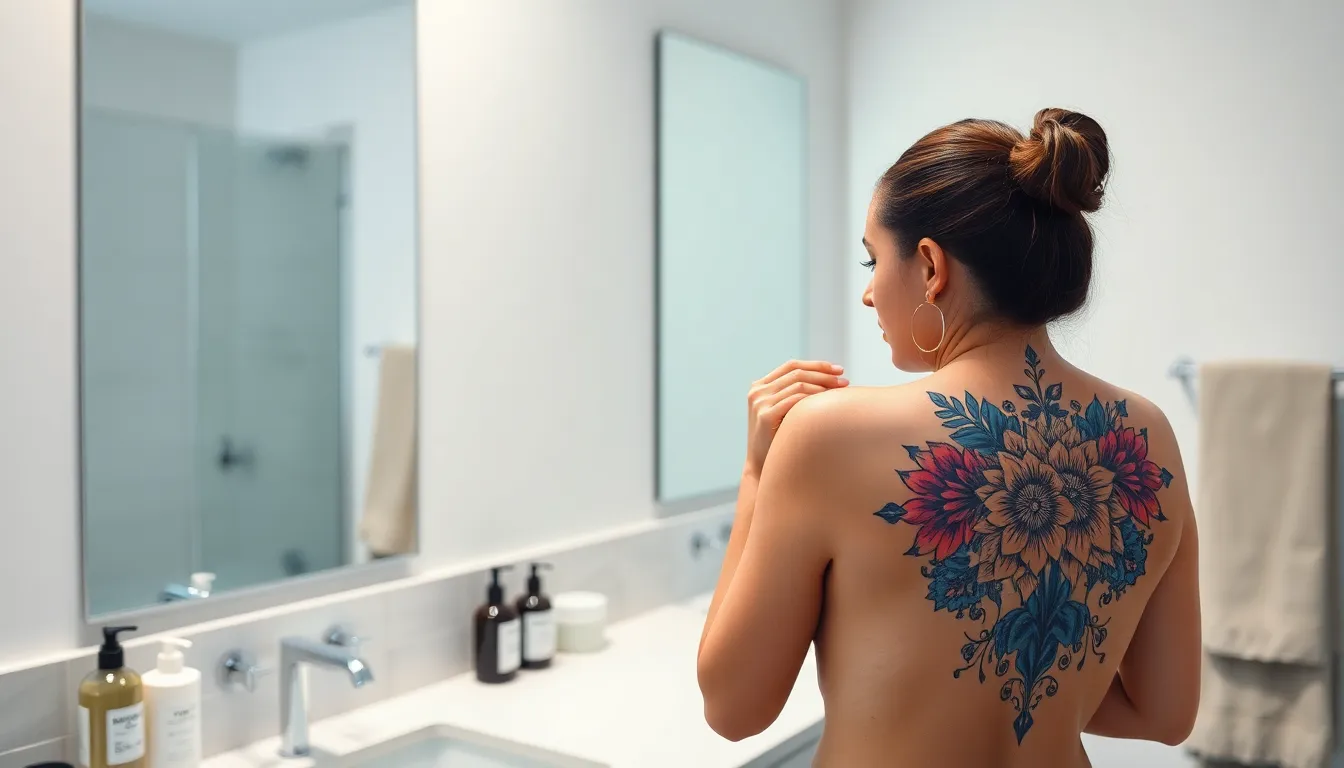
Proper aftercare becomes even more crucial when dealing with extensive back cover-up work, as these tattoos typically involve more ink and longer healing times than standard pieces.
Healing Process for Extensive Work
Clean the tattooed area gently with mild soap and lukewarm water twice daily during the initial healing phase. Pat the skin dry using a clean towel rather than rubbing, which can irritate the sensitive tissue and disrupt the healing process.
Apply a thin layer of recommended healing ointment or fragrance-free lotion to keep the area moisturized without oversaturating the skin. We recommend using products specifically designed for tattoo aftercare rather than generic lotions that may contain fragrances or chemicals.
Wear loose-fitting clothing to prevent friction against the tattooed skin, especially important for back pieces where clothing constantly makes contact. Tight shirts and bras can cause irritation and interfere with proper healing.
Avoid sun exposure, swimming pools, and hot tubs during the complete healing period, which typically spans 2-4 weeks for large cover-up work. These environments can introduce bacteria or cause fading before the tattoo has fully set.
Expect normal healing symptoms including redness, swelling, and peeling as your skin processes the extensive ink work involved in cover-up tattoos.
Protecting Your Investment Long-Term
Use sunscreen with high SPF regularly on your tattooed skin to prevent color fading and maintain the vibrancy of your cover-up design. UV rays can cause important damage to tattoo pigments over time, particularly problematic for cover-ups that rely on exact color saturation.
Moisturize the skin daily with quality lotions to keep the tattooed area hydrated and supple. Well-moisturized skin helps preserve tattoo clarity and prevents premature aging of the artwork.
Avoid harsh scrubbing or exfoliation directly over the tattooed area when showering or during skincare routines. Gentle cleansing maintains the integrity of the tattoo while keeping the skin healthy.
Touch-Up Maintenance Schedule
Schedule your first touch-up appointment 6-8 weeks after the initial healing completes, as cover-ups often require color adjustments and detail refinement once the skin has fully settled. This timing allows us to assess how well the cover-up has taken and make necessary improvements.
Plan for periodic touch-ups every few years to maintain color vibrancy and design sharpness, especially important for large, heavily inked back tattoos that experience regular clothing friction. Cover-up work typically requires more maintenance than original tattoos due to the layered ink application.
Monitor your tattoo’s appearance regularly and consult with your artist when you notice any fading or detail loss, as early intervention can prevent more extensive touch-up work later.
Conclusion
We’ve covered everything you need to know about creating stunning back tattoo cover-ups that transform unwanted ink into beautiful artwork. From small delicate designs to full back masterpieces your options are truly limitless when you work with the right artist and approach.
Remember that successful cover-ups aren’t just about hiding old tattoos – they’re about creating something meaningful that you’ll love for years to come. Whether you choose botanical gardens abstract art or cultural symbols the key is selecting designs that speak to your personal style.
Take time to research experienced cover-up specialists and don’t rush the consultation process. With proper planning thoughtful design choices and dedicated aftercare your new back tattoo will become a stunning piece of art you’re proud to show off.
Frequently Asked Questions
What makes the back an ideal location for tattoo cover-ups?
The back provides a large canvas with ample space for creative designs, allowing tattoo artists to work with various artistic options like florals, mandalas, geometric patterns, and nature scenes. The expansive area gives artists flexibility to strategically place new designs over existing tattoos while maintaining aesthetic appeal and effective coverage.
Can small designs effectively cover unwanted back tattoos?
Yes, small back tattoo cover-ups can achieve significant transformations without requiring large designs. Delicate floral motifs like cherry blossoms and peonies, geometric patterns with defined edges, and minimalist nature elements such as single feathers or tiny birds can create impactful yet simple cover-ups through strategic placement and thoughtful design choices.
What are the best design options for covering large back tattoos?
Full back mandala designs offer versatile coverage through intricate circular patterns, while watercolor scenes can cover irregularly shaped or faded tattoos with soft, blended colors. Ornate Victorian-style artwork featuring intricate floral patterns and layered designs also provides elegant solutions for sophisticated cover-ups, ensuring both practical coverage and artistic beauty.
Is it always necessary to completely hide the original tattoo in a cover-up?
No, the best cover-ups don’t always completely conceal original ink. Techniques like shadow integration, silhouette transformation, ink overlap, and negative space design can incorporate existing tattoos into new artwork. This approach treats current tattoos as raw material for artistic transformation rather than something to completely hide.
What are popular cover-up styles for women’s back tattoos?
Popular styles include feminine botanical gardens featuring roses and lotus flowers, abstract artistic expressions with geometric patterns, and cultural symbols like butterflies, Celtic knots, and vintage clocks. Vines and branches work well for larger tattoos, providing organic coverage while adding meaningful depth and significance to the new artwork.
How important is color selection in back tattoo cover-ups?
Color selection is crucial for successful cover-ups. Dark inks like black and charcoal provide reliable coverage for heavily saturated tattoos, while navy blue works well for nature-inspired designs. Bright colors create focal points that distract from underlying ink, and monochromatic designs offer sophisticated, cohesive coverage options.
How do I find the right tattoo artist for a back cover-up?
Research cover-up specialists by evaluating portfolios for dedicated cover-up work and reading client testimonials. During consultations, bring clear photos of existing tattoos, discuss design possibilities and techniques, and ask about their experience with similar projects. Choose artists who specialize in cover-ups and understand the unique challenges involved.
What special aftercare is needed for large back tattoo cover-ups?
Large back cover-ups require gentle cleaning routines, healing ointment application, and loose-fitting clothing to prevent irritation. Avoid sun exposure and certain activities during healing, maintain regular moisturizing, and use sunscreen long-term. Schedule touch-up appointments to maintain color vibrancy and design sharpness over time.
